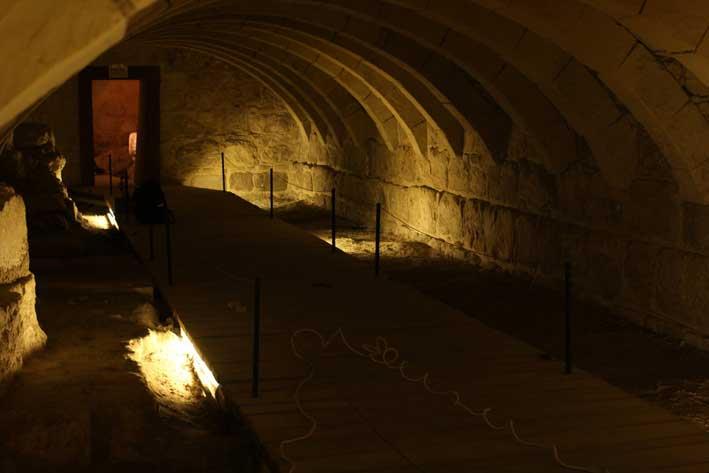The APS Mdina Biennale is now in its third edition, a renaissance period for the biennale, since the takeover of Professor Schembri Bonaci as its artistic director. This change brought with it a more intellectual and international flavour to the exhibition, wherein secular and unorthodox pieces were allowed to form part of this once religious art exposition. A number of local and international artists have formed part of this exhibition throughout these years. This article is a spotlight on a returning artist: Robert Stokowy.
Robert Stokowy is a Chicago-based installation and performance artist. He works mostly in audio-based artworks, developing a number of site-specific installations and performances. Structures: Mdina was Stokowy's first piece in the APS Mdina Biennale. Exhibited in the Subterranean Vaults of the Mdina Cathedral Museum, the piece reflected on the removal of any element that was not pure sound. Stokowy captured the sound of the Silent City through a number of soundbites and placed them into this cavernous hall. The entire piece was devoted to sound, radically removing any external visual element. In many ways, the hall itself was the main visual component of the piece, with the sound enhancing the space throughout. Pockets of silence were counteracted by the speedy clopping of horses, bells and people. The radical removal of visual interference, as claimed by the artist, was due to the importance of the sound itself wherein the viewer could immerse himself into the spirit of the city. The work was connected to the site through the placement of the speakers, the volume selected and the pieces used. While it was fleeting and reduced, this work was continuous in its placement as the work lasted throughout the whole period of the Biennale in 2017.

An interesting element that developed was the placement of Stokowy's piece next to another audio piece developed by James Alec Hardy. While Stokowy's was void-like in visual output, Hardy's was more engaging and visual. The placement of screen monitors in the Byzantine Wall, a closed-off section near the Subterranean Vaults, allowed for an eerie display of colours, sound and feedback to colour this section. The pull of Hardy's work is thus a reflection on the vacuum-like aspects of Stokowy's own piece, allowing for a connection and dialogue to be created between these two pieces.
The work attempted to answer the theme in 2017 - 'The Mediterranean: A Sea of Conflicting Spiritualities' - wherein Stokowy captured the spirit of Malta's oldest capital through its sound. A documentation of sorts, this installation emerges as perhaps one of the most interesting pieces exhibited in this Biennale. The work's lack of visual or tactile confrontation was shocking to some, disappointing to others, and exciting at the same time. The work reflects Stokowy's ongoing thesis into the elements of sound engineering and the impact of sound on collective memories.
Stokowy describes himself as a minimalist performance and installation artist. He has exhibited and performed throughout numerous countries. The piece Stokowy is proposing for this year's Biennale is in many ways opposite and similar to his previous piece. Entitled Calling upon Erida, the work involves a more performative and visual installation than the previous one, wherein a number of singers and props form part of the installation piece and process. The work is proposed to feature a few performances, underlining the ephemerality of experience and the moment. The reduction of technological and technical interventions allow for the human input and the human error to become one of the pillars of this work. The audience is invited to become an active part of the piece.
While the performers move through the Museum, each audience member can choose their own path of experience and create their own version of the piece. Thus, the audience member also becomes the artist, creating their own dialogue and version of the piece through their memory. In many ways, this piece attempts to create a dialogue with this year's APS Mdina Biennale's theme: 'Regaining a Paradise Lost: The Role of the Arts'. The essence of the collective memory is also underlined in this piece as the whole work cannot be experienced in totality by one person. Rather snippets are viewed and experienced by several people at one time, and only through dialogue between all these individuals can one create a complete run-through of the piece.
www.mdinabiennale.com